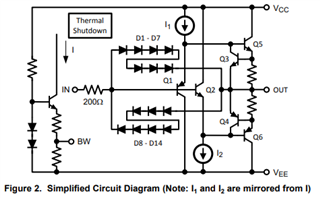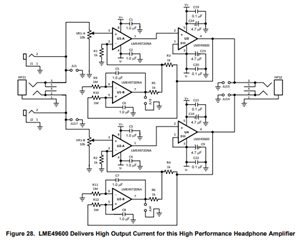Other Parts Discussed in Thread: BUF634A, LME49600, BUF634
This part (80V!!) looks like a good candidate for a higher power audio amplifier. How many OPA593 parts do you think can be successfully paralleled in a composite design (driven by a single high-performance opamp)? And what would be the limiting factor(s) when paralleling multiple 593 parts?



